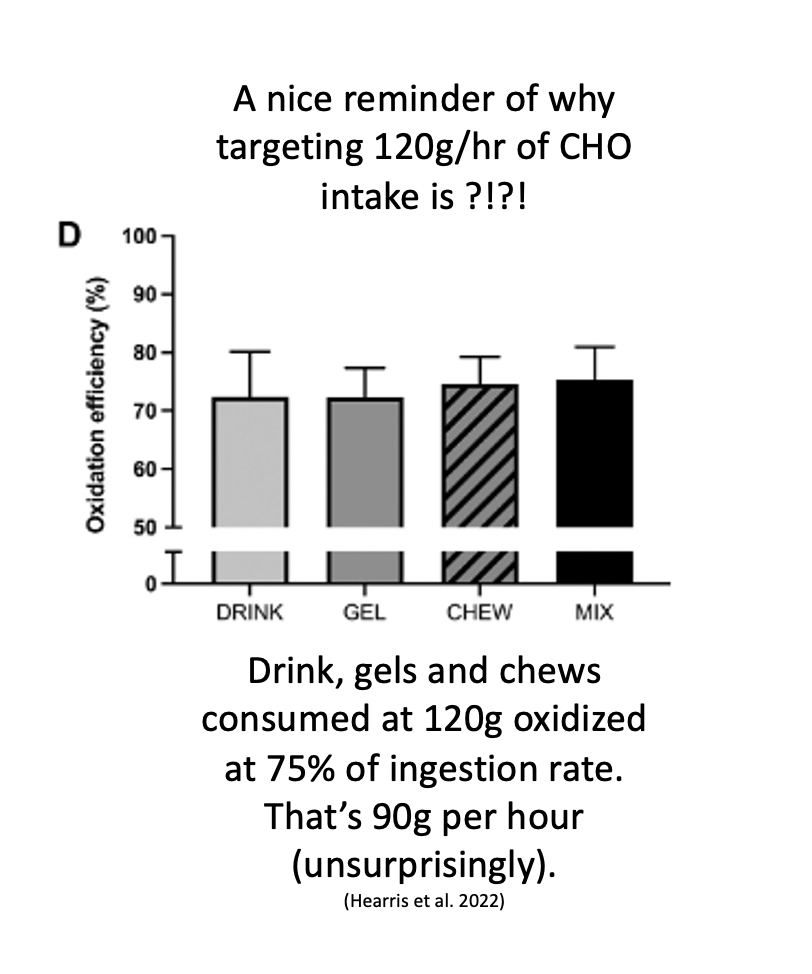Is "Carbo-Loading" as straightforward as we think?

Having recently returned from the Ironman World Championships in Kona, “Carbo Loading” in the race week was something mentioned is just about every conversation. Like it was a fact. However, carbohydrate loading prior to an endurance event is indeed ubiquitous – but why? And how should we do it? Let’s discuss.
Energy stores
This will be a refresher for regular readers of my blog, or of our monthly summary of the latest endurance science research, TSS – but understanding the whys and hows of pre-exercise carbohydrate loading requires some knowledge of the energy stores we have in the body, and how we use them during exercise.
During endurance exercise, particularly relatively even-paced events like marathons or Ironman triathlons, almost all of the energy production we need to power muscle contractions come from aerobic metabolism, or the breakdown of fuels in oxygen-dependent pathways. That’s why we have lungs, our heart, blood, and blood vessels, to deliver oxygen to our tissues fo...
Right fuel, Right Time, Wrong Protocol? Lessons From a Recent Study

With the athlete I coach, I promote what I call the “Right Fuel, Right Time” approach to nutrition for endurance training, as discussed in blogs and on our courses. By "Right Fuel, Right Time," I mean advocating for the timely management and adaptation of nutrition, particularly carbohydrate intake, according to training demands. These objectives may aim to maximize acute performance within the session or facilitate high rates of fat oxidation.
In the literature, we come across the term "Periodised carbohydrate intake," which is an approach that follows a very similar principle and is seeing increasing research interest (1, 3).
The rationale for this approach is that adequate carbohydrate should be consumed to support the quality of training sessions. However, we should avoid over-consuming carbohydrates on easier, less demanding days, as this may blunt the signals that lead to positive adaptive responses (2). Carbohydrates and fats are the body’s primary fuels. While fat stores are ...
Carbohydrate ingestion rates during exercise: 90 vs 120 grams per hour – which is best?

I recently made a post on Instagram that got a lot of attention and questions, and it was one that compared the percentage efficiency of carbohydrate (CHO) ingestion when was taking 120 g of CHO per hour. There were a lot of questions, and of course it’s hard to explain in enough detail via an Instagram story (see below).
 So, as such, in this blog, I am going to have a look at the emerging literature suggesting it may be possible to ingest carbohydrate at rates as high as 120 grams per hour during exercise (that’s ~5-6 gels!). Carbohydrate ingestion during training and racing has a long history in exercise physiology, sports nutrition, and endurance sport. Despite decades of research investigating the optimum dose, type, and form of carbohydrate to support performance, research is still emerging that challenges our practices. So, let’s get into it.
So, as such, in this blog, I am going to have a look at the emerging literature suggesting it may be possible to ingest carbohydrate at rates as high as 120 grams per hour during exercise (that’s ~5-6 gels!). Carbohydrate ingestion during training and racing has a long history in exercise physiology, sports nutrition, and endurance sport. Despite decades of research investigating the optimum dose, type, and form of carbohydrate to support performance, research is still emerging that challenges our practices. So, let’s get into it.
Why carbohydrate during exercise?
We have often discussed how whilst the body’s fat energy stores are vast and effectively limitless dur...
Changes in HRV with training intensity and the menstrual cycle: Insights from our big data study

As many of you will know, the application of heart rate variability (HRV) to endurance training is one of my major research interests (6–8), and something I consistently integrate into my coaching practice with elite and amateur triathletes. Daily measurements of HRV upon waking to tell us about our autonomic function; specifically, HRV measured as the square root of the mean squared difference between beat-to-beat intervals (rMSSD) is a measure of parasympathetic nervous system activity. The parasympathetic nervous system is the arm of the autonomic system that slows things like your heart rate down, and therefore suppressed parasympathetic activity, and so suppressed HRV measured as rMSSD, is indicative of a state of stress. This is what makes daily HRV measurements useful for informing the training process; trends in HRV can help us to determine when we might need to back off, and when we can be confident in putting the hammer down. Indeed, using HRV measurements to guide daily trai...
